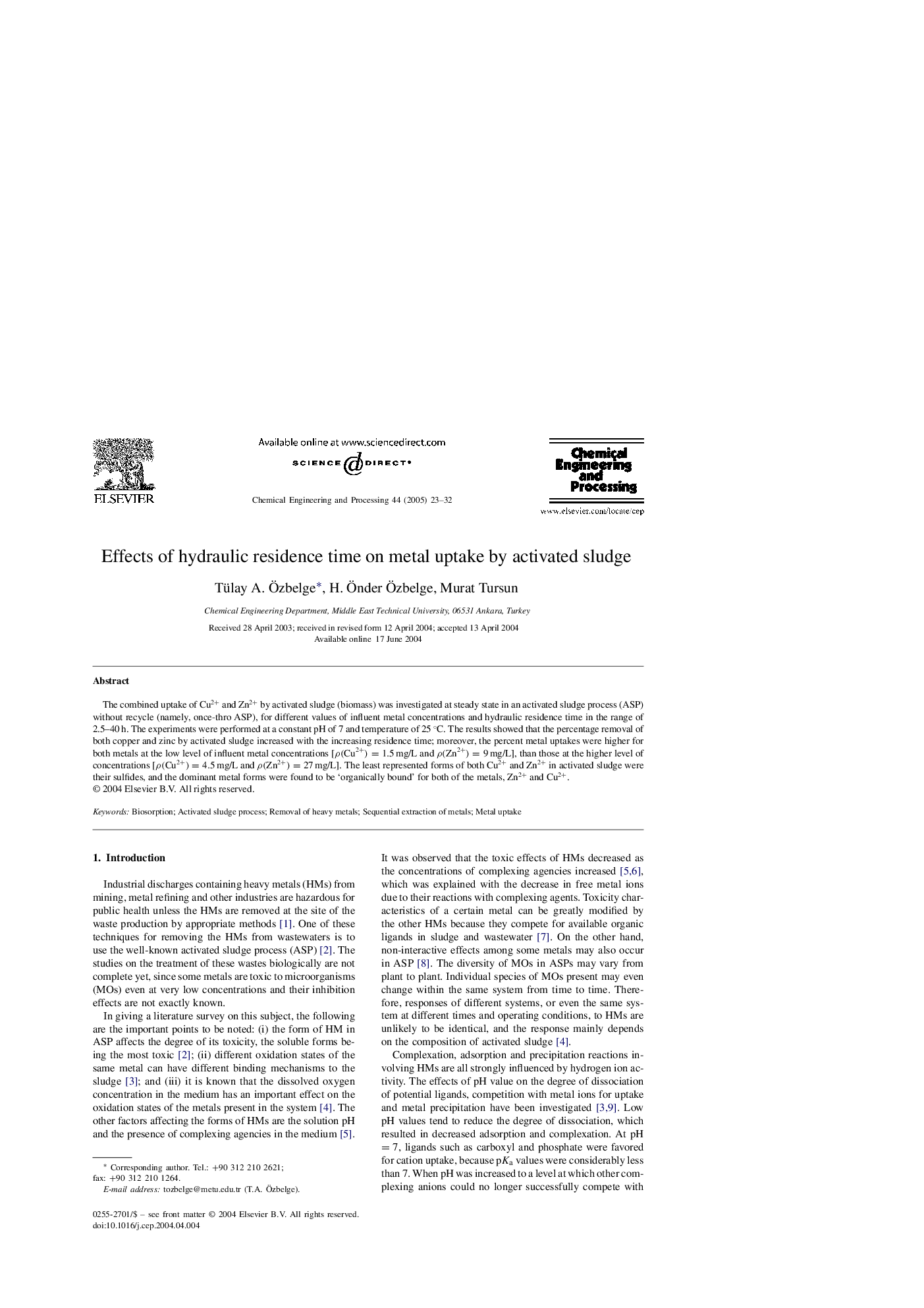| Article ID | Journal | Published Year | Pages | File Type |
|---|---|---|---|---|
| 10396969 | Chemical Engineering and Processing: Process Intensification | 2005 | 10 Pages |
Abstract
The combined uptake of Cu2+ and Zn2+ by activated sludge (biomass) was investigated at steady state in an activated sludge process (ASP) without recycle (namely, once-thro ASP), for different values of influent metal concentrations and hydraulic residence time in the range of 2.5-40 h. The experiments were performed at a constant pH of 7 and temperature of 25 °C. The results showed that the percentage removal of both copper and zinc by activated sludge increased with the increasing residence time; moreover, the percent metal uptakes were higher for both metals at the low level of influent metal concentrations [Ï(Cu2+)=1.5 mg/L and Ï(Zn2+)=9 mg/L], than those at the higher level of concentrations [Ï(Cu2+)=4.5 mg/L and Ï(Zn2+)=27 mg/L]. The least represented forms of both Cu2+ and Zn2+ in activated sludge were their sulfides, and the dominant metal forms were found to be 'organically bound' for both of the metals, Zn2+ and Cu2+.
Related Topics
Physical Sciences and Engineering
Chemical Engineering
Process Chemistry and Technology
Authors
Tülay A. Ãzbelge, H.Ãnder Ãzbelge, Murat Tursun,
